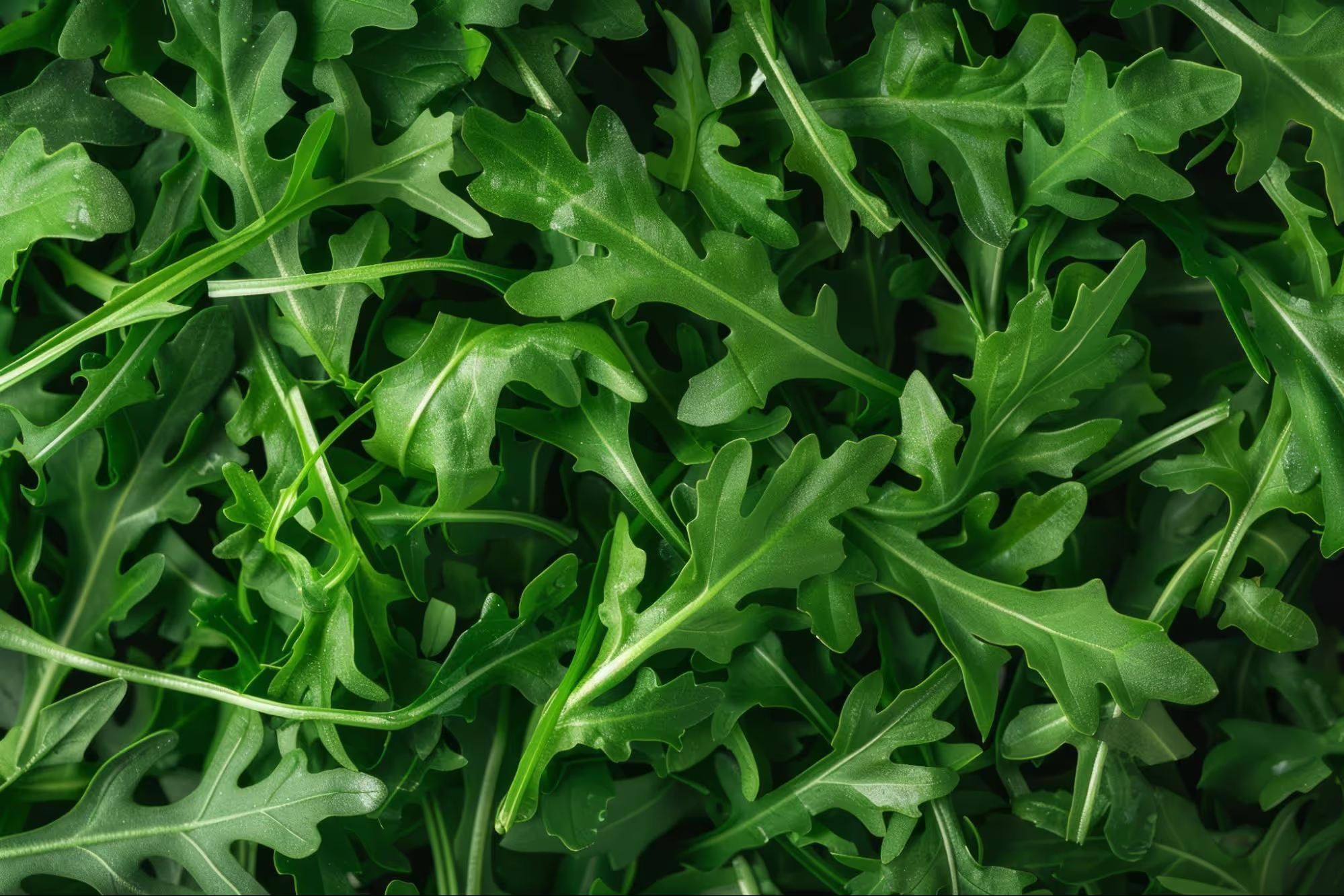
Arugula is a plant known for its distinctive, mildly bitter taste, but also for the varying colors of its leaves. The color of arugula leaves can differ depending on the variety, growing conditions, and developmental stage of the plant, which may indicate differences in nutritional values and flavor. This visual aspect of arugula is not just an aesthetic feature but plays an important role in its use in both culinary and health contexts, as leaf color can indicate the presence of specific nutrients and plant pigments.
The color of arugula leaves can vary significantly, typically ranging from dark green to light green, and occasionally red or purple hues, especially on the edges of the leaves. These color variations result from different factors, including the type of arugula, growing conditions, and external influences such as light exposure and temperature.
The most common type of arugula used in cuisine is characterized by dark green leaves, while some varieties may have lighter, almost yellowish leaves. Arugula that grows in conditions with abundant light tends to develop darker green leaves due to higher concentrations of chlorophyll, while plants growing in shady or cooler conditions usually have lighter leaves. These color changes are not merely aesthetic but can indicate differences in the plant's nutritional values and flavor.
Although the color of arugula leaves generally ranges from dark green to light green, in some cases, leaf color can indicate growth irregularities, diseases, or stress:
Yellow Leaves:
Black or Brown Leaves:
Red or Purple Hues:
There are several different types of arugula available on the market, each varying in appearance and taste. The most well-known variety is Eruca sativa, characterized by dark green leaves and a mildly peppery taste. In addition, there is Sylvetta or "wild arugula," which features smaller leaves and a stronger, more bitter flavor. This variety often has lighter leaves with coarser edges, typical of wild plants. There are also arugula varieties that develop red or purple hues, especially when exposed to stressful conditions like high temperatures or drought. These hues may indicate the presence of flavonoids, plant pigments with potential anti-inflammatory and anticancer properties, which is why these varieties are often used in specialized culinary and nutritional products.
Chlorophyll, the pigment responsible for the green color of plants, is crucial for photosynthesis, allowing plants to absorb light and produce the nutrients necessary for their growth. In addition to supporting the life of the plant, chlorophyll has numerous potential health benefits for humans, including aiding in detoxification and improving digestive function.
Dark green arugula leaves contain higher amounts of chlorophyll, making them richer in antioxidants and essential nutrients such as vitamin C, vitamin K, folate, and calcium. These nutrients play a key role in boosting the immune system, supporting bone health, and preventing various diseases. On the other hand, arugula with lighter or yellowish leaves may have slightly lower concentrations of these nutrients, but it remains rich in fiber, vitamins, and minerals. This variety often has a milder, refreshing taste, making it ideal for light dishes that require a gentler flavor.
The color of arugula leaves is not only the result of the plant's genetic characteristics but also the influence of external factors. One of the main factors that can affect the color of arugula is the amount of light the plant receives. In intense light conditions, the plant develops dark green leaves due to the increased content of chlorophyll. If arugula grows in partial shade or cooler areas, the leaves may be lighter, and the plant will have a milder, less intense flavor.
Temperature is another important factor. In high temperatures, arugula plants may show reddish hues, as heat stress can influence the production of anthocyanins, pigments responsible for red, purple, and blue tones. Additionally, soil quality, moisture levels, and watering practices can significantly affect leaf color.
The color of arugula leaves is not just a visual element but provides important information about the conditions in which the plant grows, its nutritional value, and flavor. Dark green leaves are rich in chlorophyll and nutrients, while lighter colors may indicate different growing conditions or even stress factors. Understanding these changes can help in choosing the best arugula for specific culinary needs and recognizing potential problems with the plants. The color of arugula is a key indicator of its health and nutritional value, and understanding these variations helps in selecting the best arugula for different culinary applications.